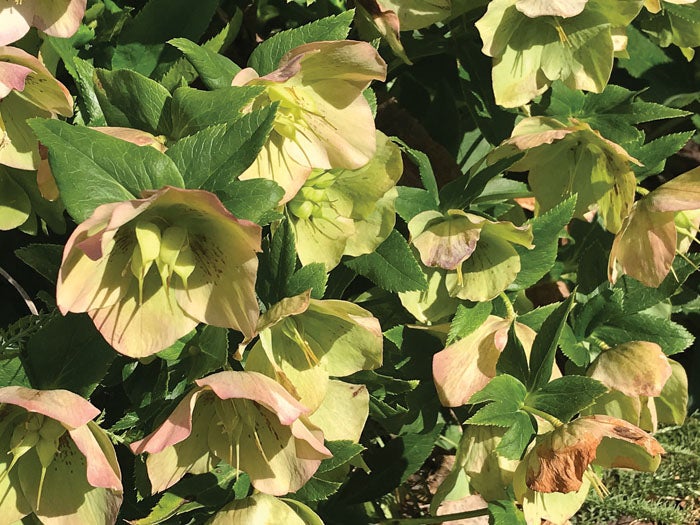Fill your winter garden with ornamentals
Published 12:00 am Friday, January 24, 2020

- Submitted photo Hellebores make beautiful late winter or early spring displays in the garden.
By Carole Massey
Rowan Master Gardener
Winter in North Carolina for a gardener can be very frustrating. Some days are too cold and windy to even think about being outside. Others are too damp. Some are bright and sunny, enticing us to wander out and bemoan all that needs to be done; sticks and branches galore to be picked up, henbit and chickweed to be pulled or smothered.
But as the winter sun starts warming the earth, Mother Nature starts teasing us with her winter glories. You may have to get down on your hands and knees to find and appreciate some of them, but when you do, you certainly will be rewarded.
Winter gardening, I think, starts with showy ornamentals. There are a few trees and shrubs worthy of note. Cornus mas, or Cornelian cherry, is a small tree or large shrub that forms bright yellow clusters of fragrant blossoms on bare, naked branches in the dead of winter.
It complements the Edgeworthia chrysantha, Oriental Paperbush, which also has a fragrant yellow flower held in upside down clusters on the branch tips of the shrub. Pair these two with any variety of witch-hazel, Hamamelis, and you have a botanical garden-worthy display. There are several varieties of witch-hazel, both tree and shrub form, with a range of color (red, orange, pink, purple and multi yellow) in their shaggy, drooping winter bloom that just makes for instant appreciation. The beauty of all of these plants is there are few if any diseases, pests or maintenance requirements.
Then there are the winter bulbs. The most familiar is the hardy Crocus chrysanthus, those that start blooming in January and that will go into April. Colors range from purple to white to yellow and many variegations. These have as many as four flowers per plant with their shorter, 2-inch leaves.
Their close kin, Crocus tommasinianus, is another hardy crocus that has one to two flowers per plant with an early bloom time in January or February. Their bloom offers variations of violet and lilac with silvery overtones. Clusters of crocus tucked under a shrub, or flowing along a rock wall are worth the effort spent planning and planting in the fall.
Another worthy, tough little perennial is the Cyclamen. Though not a bulb, it’s a corm. Iit loves the cool, loamy soil in a shade or part-shade location where it will form a “colony” of silvery marked dark glossy leaves with flowers in shades of pink to dark carmine-red.
Where would we be without the nodding heads of the Narcissus or daffodils? So many varieties, colors ranging from whites, to pinks, pinks rimmed with orange, pale yellows, bright yellows, large trumpets, petite trumpets, fragrant and some not-so. Cleaver planting has blooms from early February through April.
No winter garden should be without Hellebores. So many new varieties, many are hybrids that give a splash of color in a shade garden, complimented by their thick glossy, leathery green foliage. These could be the mainstay of the garden: deer resistant, no diseases, minimum maintenance (removal of winter damaged leaves), often self-sowing, blooming in late winter or early spring around the period of Lent, and are often known as Lenten roses. Many are now being developed with red stems and upright rather than downward facing blooms.
Once planted, this collection of plants will give the gardener more incentive to enjoy their sleepy winter gardens, just knowing what will be peeking through, even if it’s snow instead of a blanket of leaves and mulch that has them covered. Spring is but a breath away.
Carole Massey, Extension Master Gardener Volunteer Class of 1998



